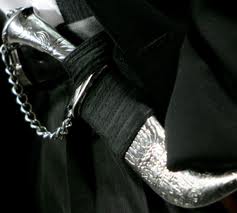


As the State Education Department of New South Wales (NSW) province of Australia has sought feedback on proposed changes to the wearing of kirpan by Sikh students in the government schools in the province for genuine religious purposes.
The proposal was made after the ban was enforced after a bullying-victim 14-year-old Sikh boy allegedly used a kirpan to stab a 16-year-old at a Sydney school. The Sikh community is in talks with NSW education minister Sarah Mitchell to get the order withdrawn or ensure an amicable solution to the issue.
The NSW Gurdwara Group has worked closely with the Department of Education NSW (DoE) and other government agencies over the last few weeks. In an effort to come up with a solution for Sikh students to wear Kirpan and maintain safety at schools, a proposal was finalized.
However, various Sikh bodies are raising objections to the proposal. Global Sikh organization United Sikhs has opposed the conditions proposed by the NSW Australian govt on the wearing of the Kirpan by students in NSW schools.
“We stand with the NSW and global Sikh community to defend the wearing of the Kirpan as a Kakaar. We are mindful of the need to consider the safety of all students and staff when balancing the right of Sikh students to practice their #faith. However, we do not accept any conditions that treat the Kirpan as a ceremonial ‘knife’ that is to be blunt, concealed, chained or limited by size, when there are alternative ways of securing the safety of students, ” said Mejindarpal Kaur, International Legal Director of the organization.
The main points raised by the United Sikhs are given below:
- Kindly replace the word ‘ceremonial’ with ‘religious’.
- To refer to a Kirpan as a ‘knife’ is offensive. Please use ‘Kirpan’ as a proper noun (which we note and appreciate you have done so for the most part). We would propose the following changes to your text: “…there has to date been a legal exemption for knives carried for religious purposes, and this has been applied to the carrying of the Kirpan by initiated Sikhs.” “A Kirpan is one of the five distinguishing articles of the Sikh faith, carried and worn by initiated Sikhs on their person at all times, and comprises a curved blade.”
- Attaching a chain to a Kirpan would require the Kirpan to be physically modified. This would be inappropriate. Conversely, the proposal to sew into the Kirpan Gaatra a “sturdy fabric loop” does not require physical modifications to the Kirpan. We request that the chain option be removed.
- To wear a Kirpan is a matter of religious piety and dedication. Requiring it to be ‘concealed’ sullies the wearing of the Kirpan. We propose that the text be modified to requiring that the Kirpan be worn under one’s outer clothing.
- If the Kirpan is worn under outer clothing and is secured by a sewn-in fabric loop such that the Kirpan cannot be removed easily, we do not understand why it is necessary to require that the Kirpan have a blunt blade. If it is accepted that a Kirpan may be worn if it cannot be removed easily, then whether or not it is blunt is a moot point. It does not appear to us to be a proportionate or necessary requirement in light of the other requirements.
- The Summary Offences Act 1988 (NSW) does not stipulate a limit to the size of the Kirpan because it recognises that the length of a Kirpan is not a significant factor. Hence, we request that you do not specify a length for the Kirpan in the proposed guidelines.
- A Kirpan is always carried within a scabbard and held in position by a loop whilst being carried securely in a cloth Gaatra, a shoulder strap is worn across one’s torso. This would secure it from falling or being removed with ease. During sports, the Kirpan may be further secured to prevent it from falling and causing injury during a sporting activity. There should be no further reason or method used to secure it. The Sikh community, like many other migrant communities, have made Australia their home since over a hundred years ago. Hence their religious freedom rights should be protected without prejudice.




